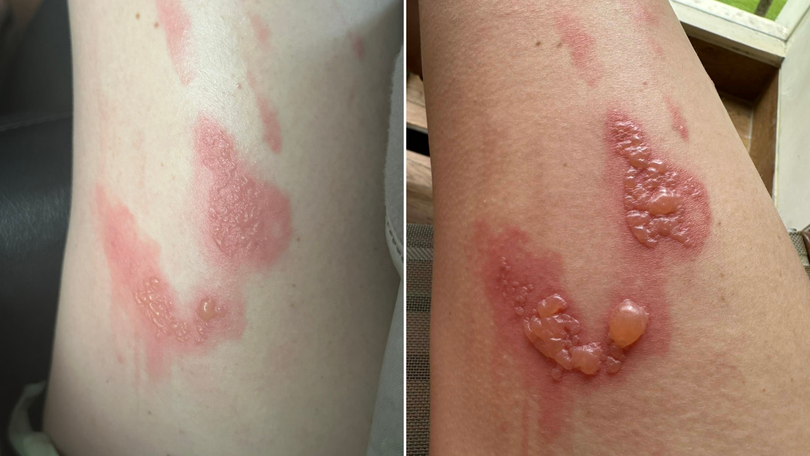Bali tourists warned about painful threat after Aussie woman left with shocking rashes

A woman’s run-in with a tiny beetle while on holiday has left her with painful rashes and blisters weeks later.
Gabrielle Vanessa was travelling from Canggu to Nusa Dua, south Bali, on November 8 when she was noticed a red rash growing on her right thigh before she felt a “stabbing pain”.
While the pain subsided the next day, the Adelaide mother then noticed a series of large red blisters develop on the rash.
Sign up to The Nightly's newsletters.
Get the first look at the digital newspaper, curated daily stories and breaking headlines delivered to your inbox.
By continuing you agree to our Terms and Privacy Policy.Almost a fortnight later, Vanessa still has what she says “looks like burn patches” — on her legs.
“I have patches of red and brown pigmentation appearing on different parts of my body and some spots are still spreading, so it’s definitely not completely over yet,” she told 7NEWS.com.au.
“I feel like it will scar or at least take months to fade.”

Without a clue to what had caused the odd rash, Vanessa posted on social media asking fellow tourists to the Indonesian island. Almost all responses pointed to a bug rarely longer than 1cm-long.
Known locally as the tomcat, the seemingly innocuous rove beetle is known for its red and black segmented body and possessing a toxin stronger than cobra venom.
While a cobra has to bite to inject its venom, tomcats don’t bite or sting their victims and instead spread its pederin toxin by either rubbing against skin or being squashed.
“I had never even heard of a tomcat beetle and I’ve been to Bali 10 times before,” Vanessa said.
“I don’t want to scare anyone, because Bali is beautiful, but people should know the basics.”
She warned anyone travelling to Bali to be extra careful at night as the beetles are attracted to lights.
“Don’t touch them or crush them against your skin, just gently blow them away,” she said.
Those who do come into contact with the beetle’s toxin should wash the irritated area with cool, soapy water, according to the American Osteopathic College of Dermatology.
They should also seek medical attention to see if a topical steroid is required.
Originally published on 7NEWS
